|
I received this lens for testing, and since there is a great interest regarding its performance, this test took priority over other tests waiting their turn.
Currently Nikon has a line of three lenses that are identical with respect to their focal length – 70-300, with the same aperture range.
I used to own one of them – the 70-300 ED. Generally, it was a good lens, but it was too light to be used at it’s maximal focal length for hand held shooting and the maximal aperture had to be closed by one stop to achieve good quality sharpness.
The second one, the cheap AFD G version, confirms the saying that “you get what you've paid for”.
This is a very mediocre lens, which is better suited for use in its wide range (70-100) than in the tele edge, where it can be quite disappointing.
Lately, Nikon issued a series of lenses with AFS + VRII and this lens that is being tested here is the latest in the series for now.
The two previous lenses in the series – the 105mm/2.8 AFS VR and the 18-200mm AFS VR were well accepted in the market, especially due to their high quality.
When I took the new 70-300 AFS VR in my hand – my first impression was – wow, it’s huge! It is also rather heavy, much heavier than its older sisters! It is built in accordance with Nikon’s fine tradition – having a strong solid structure.
Since this lens is also designated for FF (it is not a DX lens for APS sensors) – one can comprehend its size.
Nevertheless, since Nikon has only digital cameras in the APS format, and due to the crop factor, this lens appears to the camera as if it were a 105-450mm lens, I find it surprising that Nikon did not equip this lens with a tripod collar.
When shooting from a tripod, its weight on a light-weight Nikon cameras (such as the D40, D50, D80) will exert quite heavy pressure on the bayonet – surely, it is not hazardous for the camera – but there was definitely place for installing a collar for a tripod on this lens.
I wonder if Nikon designed this lens for hand held shooting only.
In contrast to the initial tests that were published on the Internet, which pointed out exaggerated CA and smears at the corners – my findings do not confirm this.
Maybe the testers had pre-production lenses or they had low quality filters attached.
This lens is equipped with a sun shade (as is usually provided by Nikon) but as indicated in my initial tests, it is quite unnecessary – maybe it is just to be used to protect the lens.
While zooming, the lens elongates considerably (focusing is internal) and when the sun shade is attached it looks like a small shoulder-held missile.
As mentioned before, this lens is quite heavy and stabilizes remarkably well in the hand with the D200 and the D2X. When using the D80, one has to alter the way the camera is held, it is certainly possible to use.
It is lighter than the 70-200 AFS VR and even lighter than the 80-400, both are most similar to it in terms of focal length and performance.
The lens has three switches – manual focusing or M/A; VR, activated or disconnected, and VR state - normal or active (for shooting from a moving car).
The minimal focusing range is about one and a half meters – this is why it’s not fit for macro shots or close-up shots such as the corresponding Sigma lens for example, which is a pity.
The optical structure is very complicated – much more than its older sisters – and is similar to the optical structure of the Nikon 80-400 VR lens. The lens is designed meticulously – and the aperture has nine curved leaves meaning that it is expected to have a good bokeh. The MTF graph also shows this tendency.
The lens has two ED elements, as compared to the one element in the simple ED version or without any such element in the AFD G version. This is well recognized in the tests – and the lens is practically free of any color aberration.
The lens is fast to focus, in comparison with its sisters of the same line. It is certainly not as quick as the 70-200 but quite close. It is much, much faster than the Nikon 80-400 lens.
The VR mechanism works wonderfully (it is a bit louder than the 18-200) and when shooting carefully, it lets one use all four of the speed stops it offers.
This is how the lens looks: 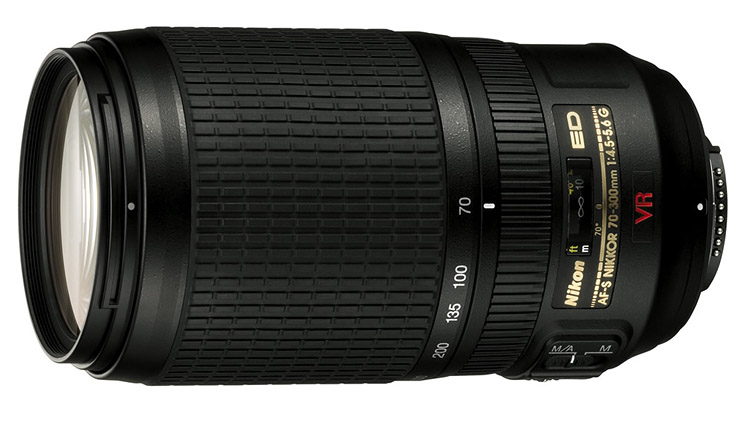 | | Color Space: 65535 |
This is its MTF graph: When taking into account that the MTF table suits the FF sensor – and on an AFS sensor we will achieve only about half of the X-axis in the table, its performance, according to the table is very good.
The following are the technical specifications – as compared with the two other lenses in the series: When observing the specifications of the three lenses – it is supposedly apparent that there are no significant differences, but that is not true.
It is true that the minimal focusing distance is identical, the aperture range is almost identical, the optical coatings are identical, the filter diameter is almost identical – but – in regard to the field tests – this lens comes from another planet.
Let us now proceed to the test results. The hues it reconstructs are neutral with a slight tendency towards “coolness”. The obtained colors are rich, and saturated, as illustrated in this example: 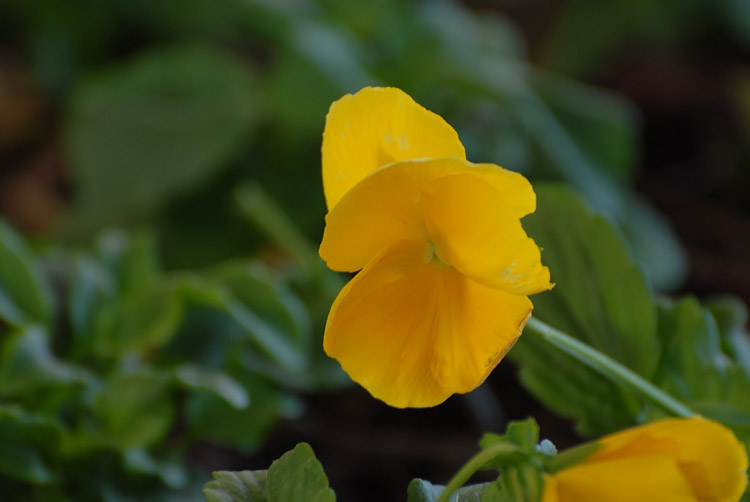 | | Model: NIKON D200 Exposure Time: 1/40sec F Number: 5.6 Max Aperture Value: 5 Focal Length: 300mm Exposure Program: Aperture priority Exposure Bias Value: 0 ISO Speed Ratings: 125 Metering Mode: Center Weighted Average White Balance: Manual white balance Flash: Flash did not fire Focal Length In 35mm Film: 450 Date Taken: 2006:12:15 09:51:42 Color Space: 65535 |
And in this example too: 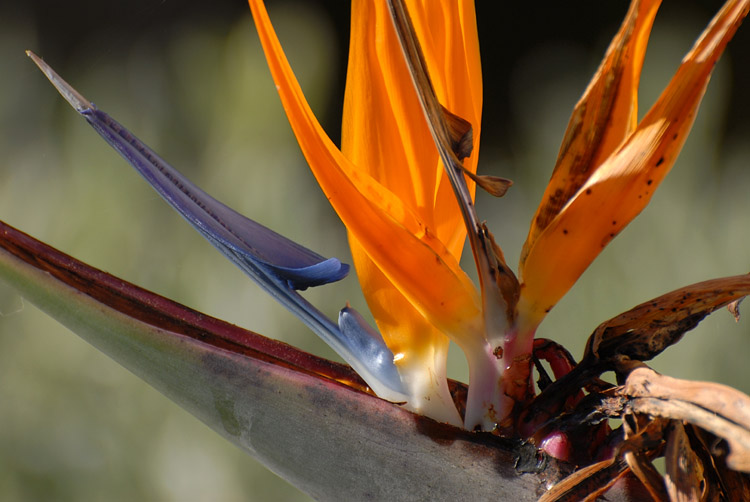 | | Model: NIKON D200 Exposure Time: 1/350sec F Number: 5.6 Max Aperture Value: 5 Focal Length: 300mm Exposure Program: Aperture priority Exposure Bias Value: 0 ISO Speed Ratings: 125 Metering Mode: Center Weighted Average White Balance: Manual white balance Flash: Flash did not fire Focal Length In 35mm Film: 450 Date Taken: 2006:12:15 09:54:52 Color Space: 65535 |
Its bokeh is excellent and can certainly enter the Nikon super league with regard to bokeh. In the first example the perforated fence, which is a well-known obstacle for the bokeh, the blurred holes appear completely round with fading margins – just as a good lens can deliver. The theme is our daffodils – but their wonderful scent one cannot yet deliver in an Internet testing article…. 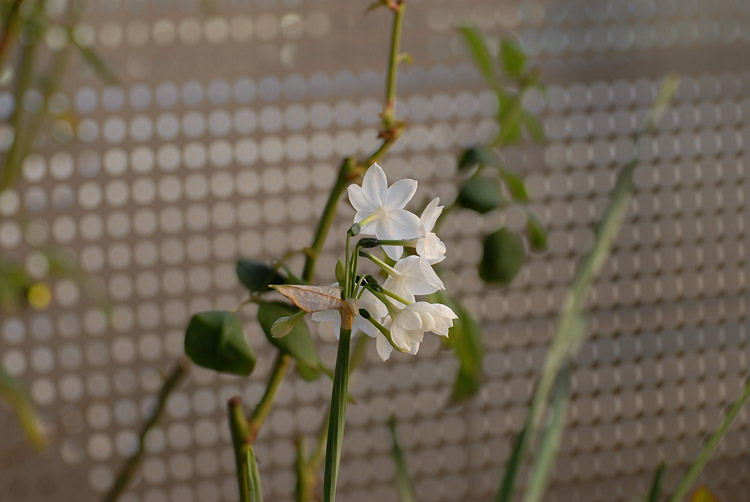 | | Model: NIKON D200 Exposure Time: 1/160sec F Number: 4.5 Max Aperture Value: 4.4 Focal Length: 90mm Exposure Program: Aperture priority Exposure Bias Value: 0 ISO Speed Ratings: 125 Metering Mode: Center Weighted Average White Balance: Manual white balance Flash: Flash did not fire Focal Length In 35mm Film: 135 Date Taken: 2006:12:15 09:57:21 Color Space: 65535 |
The second test includes background themes in changing hues and lighting, and they appear in the same soft quality, as did the fence in the previous example: 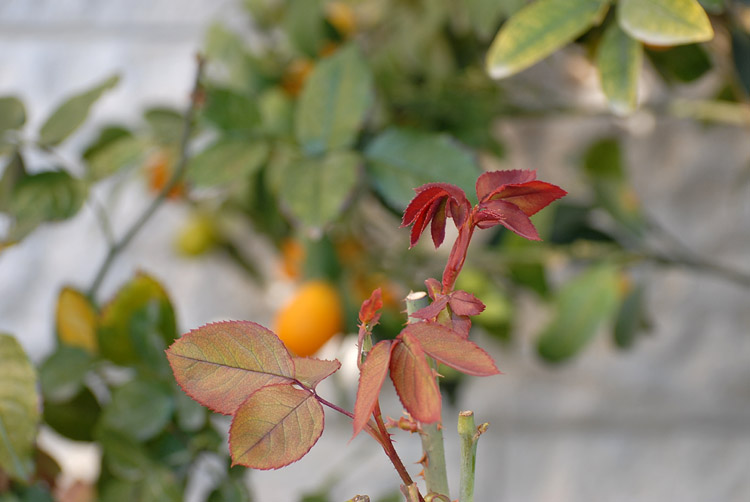 | | Model: NIKON D200 Exposure Time: 1/50sec F Number: 4.5 Max Aperture Value: 4.4 Focal Length: 102mm Exposure Program: Aperture priority Exposure Bias Value: 0 ISO Speed Ratings: 125 Metering Mode: Center Weighted Average White Balance: Manual white balance Flash: Flash did not fire Focal Length In 35mm Film: 153 Date Taken: 2006:12:15 09:58:59 Color Space: 65535 |
Besides shooting flowers, the quality of the bokeh indicates its ability to function well as a portrait lens in its wide range, but I have yet to test this. It easily passed the test of shooting with a bright backlight, giving evidence to its high-quality coatings: 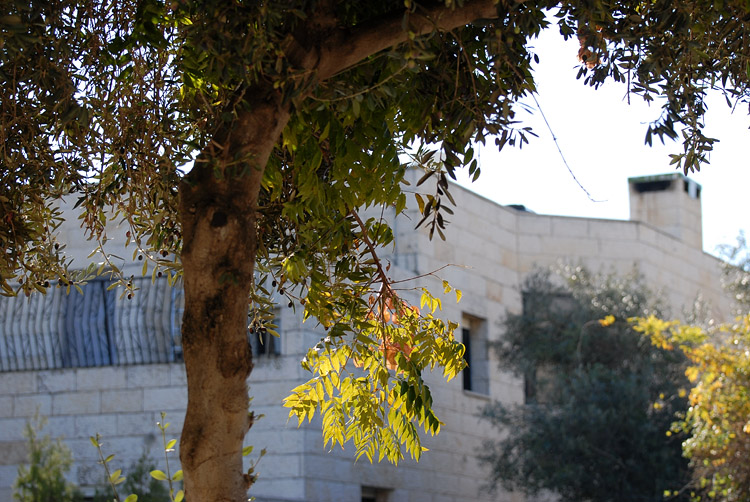 | | Model: NIKON D200 Exposure Time: 1/350sec F Number: 4.5 Max Aperture Value: 4.3 Focal Length: 70mm Exposure Program: Aperture priority Exposure Bias Value: 0 ISO Speed Ratings: 125 Metering Mode: Center Weighted Average White Balance: Manual white balance Flash: Flash did not fire Focal Length In 35mm Film: 105 Date Taken: 2006:12:15 09:54:00 Color Space: 65535 |
This lens does not have any apparent CA at the normal shooting state, in contrast to other reports that appeared on the Web: 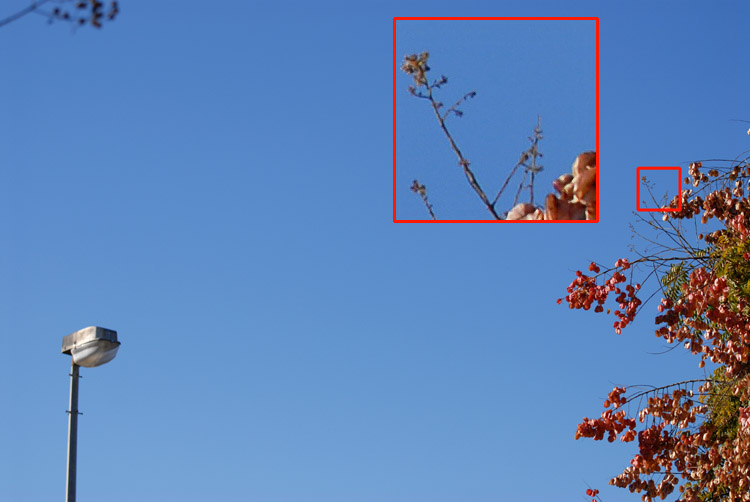 | | Model: NIKON D200 Exposure Time: 1/1250sec F Number: 4.5 Max Aperture Value: 4.3 Focal Length: 70mm Exposure Program: Aperture priority Exposure Bias Value: 0 ISO Speed Ratings: 125 Metering Mode: Center Weighted Average White Balance: Manual white balance Flash: Flash did not fire Focal Length In 35mm Film: 105 Date Taken: 2006:12:15 09:53:45 Color Space: 65535 |
The built-in ED elements reduce these aberrations until they become invisible to the eye. This lens does not show any vignetting and I did not find any visible spherical aberrations – barrel or pincushion. The lens is fantastically resistant to flare, and in photos that included the sun in the frame I had to really make an effort to obtain some flare: 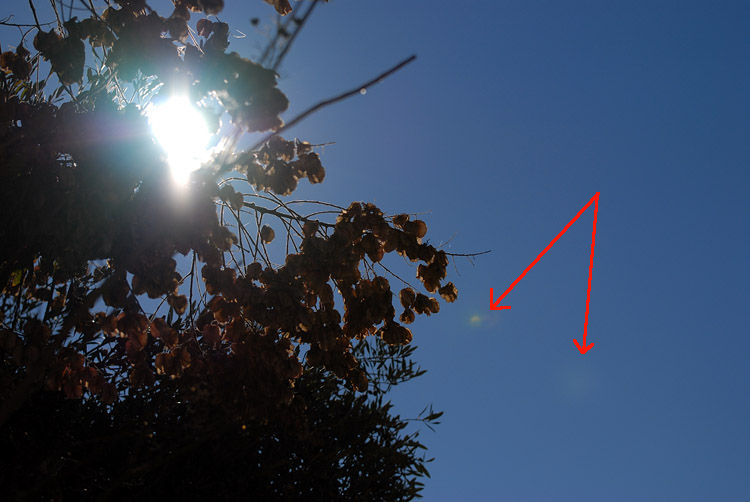 | | Model: NIKON D200 Exposure Time: 1/8000sec F Number: 4.5 Max Aperture Value: 4.3 Focal Length: 70mm Exposure Program: Aperture priority Exposure Bias Value: 0 ISO Speed Ratings: 125 Metering Mode: Center Weighted Average White Balance: Manual white balance Flash: Flash did not fire Focal Length In 35mm Film: 105 Date Taken: 2006:12:15 09:58:14 Color Space: 65535 |
As opposed to the 70-200 lens, which enters an unpleasant state with regard to flare, once the sun enters the frame or is close by. It passed the microcontrast test quite well: 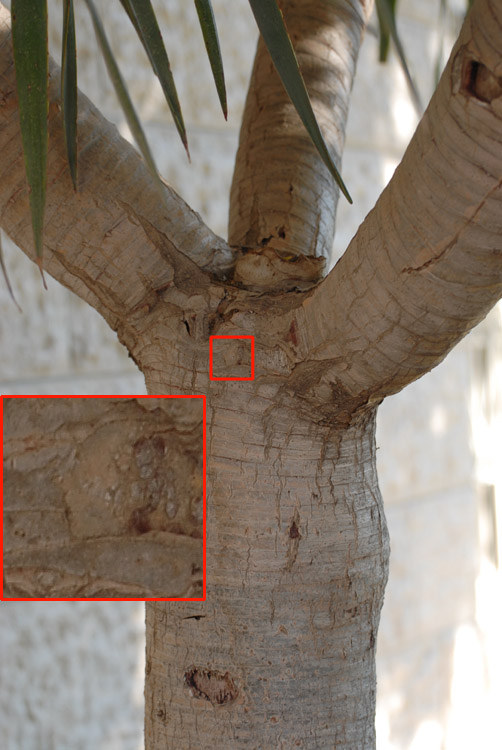 | | Model: NIKON D200 Exposure Time: 1/80sec F Number: 4.5 Max Aperture Value: 4.3 Focal Length: 70mm Exposure Program: Aperture priority Exposure Bias Value: 0 ISO Speed Ratings: 125 Metering Mode: Center Weighted Average White Balance: Manual white balance Flash: Flash did not fire Focal Length In 35mm Film: 105 Date Taken: 2006:12:15 09:50:04 Color Space: 65535 |
The sharpness tests also went well – notice the spider webs: 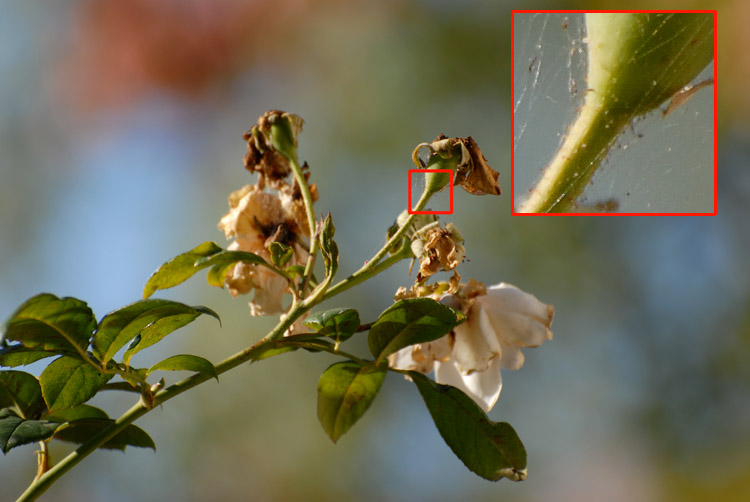 | | Model: NIKON D200 Exposure Time: 1/400sec F Number: 5.6 Max Aperture Value: 5 Focal Length: 300mm Exposure Program: Aperture priority Exposure Bias Value: 0 ISO Speed Ratings: 125 Metering Mode: Center Weighted Average White Balance: Manual white balance Flash: Flash did not fire Focal Length In 35mm Film: 450 Date Taken: 2006:12:15 09:58:02 Color Space: 65535 |
The sharpness at the 70mm state in the short range: 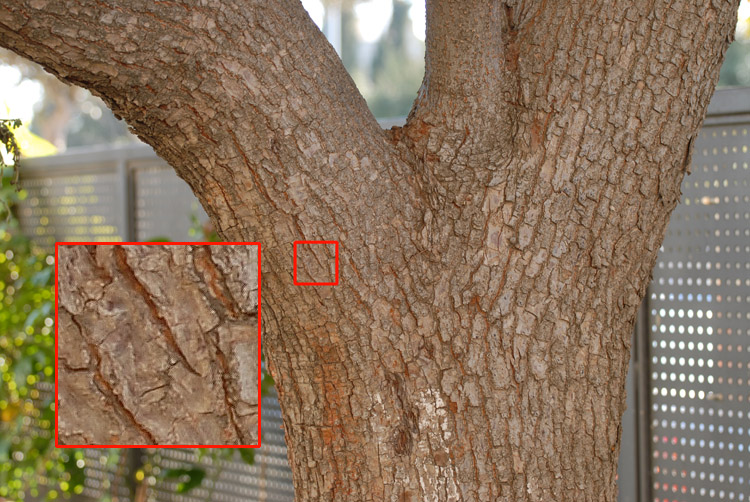 | | Model: NIKON D200 Exposure Time: 1/60sec F Number: 4.5 Max Aperture Value: 4.3 Focal Length: 70mm Exposure Program: Aperture priority Exposure Bias Value: 0 ISO Speed Ratings: 125 Metering Mode: Center Weighted Average White Balance: Manual white balance Flash: Flash did not fire Focal Length In 35mm Film: 105 Date Taken: 2006:12:15 09:50:31 Color Space: 65535 |
Same range – the sharpness at 300mm: 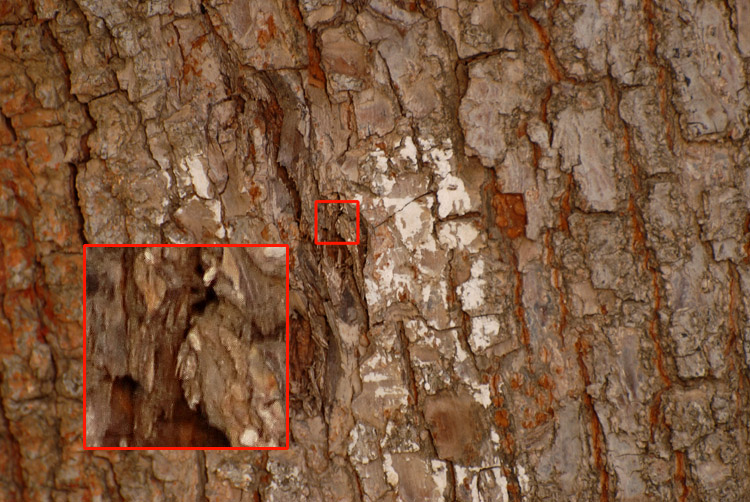 | | Model: NIKON D200 Exposure Time: 1/40sec F Number: 5.6 Max Aperture Value: 5 Focal Length: 300mm Exposure Program: Aperture priority Exposure Bias Value: 0 ISO Speed Ratings: 125 Metering Mode: Center Weighted Average White Balance: Manual white balance Flash: Flash did not fire Focal Length In 35mm Film: 450 Date Taken: 2006:12:15 09:50:23 Color Space: 65535 |
The medium range – at 70mm – produced excellent results (notice the perfect background bokeh-wise): 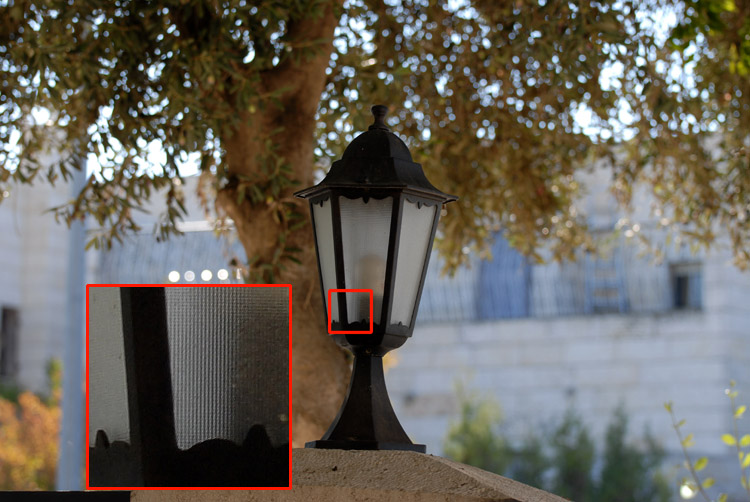 | | Model: NIKON D200 Exposure Time: 1/200sec F Number: 4.5 Max Aperture Value: 4.3 Focal Length: 70mm Exposure Program: Aperture priority Exposure Bias Value: 0 ISO Speed Ratings: 125 Metering Mode: Center Weighted Average White Balance: Manual white balance Flash: Flash did not fire Focal Length In 35mm Film: 105 Date Taken: 2006:12:15 09:50:36 Color Space: 65535 |
The long range – at 70mm: 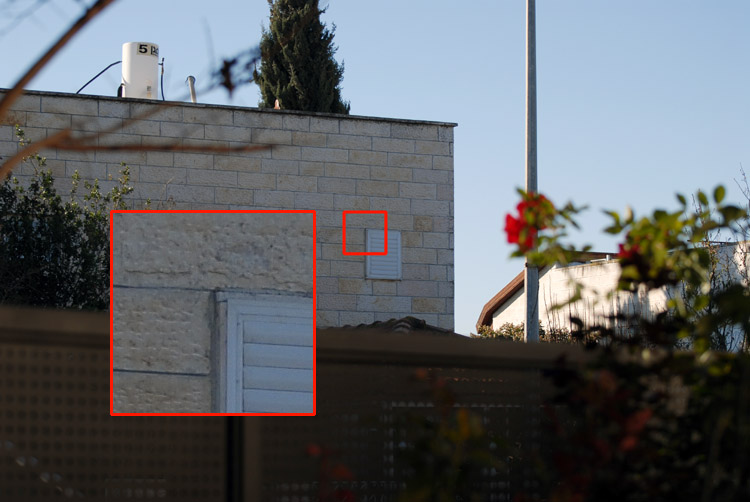 | | Model: NIKON D200 Exposure Time: 1/750sec F Number: 4.5 Max Aperture Value: 4.3 Focal Length: 70mm Exposure Program: Aperture priority Exposure Bias Value: 0 ISO Speed Ratings: 125 Metering Mode: Center Weighted Average White Balance: Manual white balance Flash: Flash did not fire Focal Length In 35mm Film: 105 Date Taken: 2006:12:15 09:51:09 Color Space: 65535 |
And the long range at 300mm: 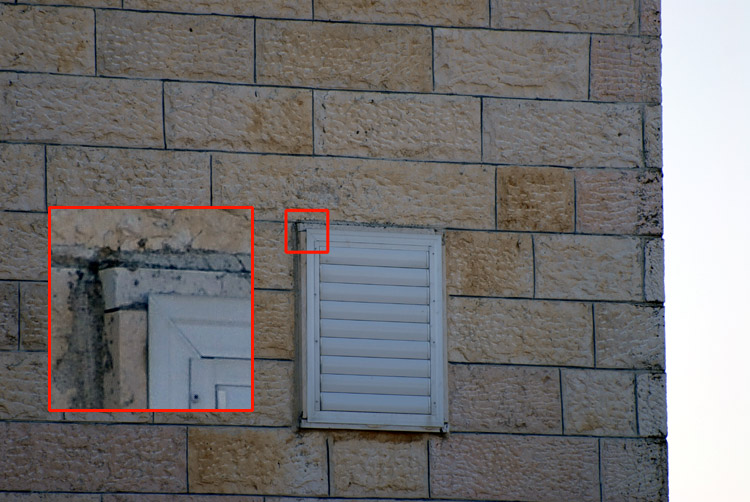 | | Model: NIKON D200 Exposure Time: 1/320sec F Number: 5.6 Max Aperture Value: 5 Focal Length: 300mm Exposure Program: Aperture priority Exposure Bias Value: 0 ISO Speed Ratings: 125 Metering Mode: Center Weighted Average White Balance: Manual white balance Flash: Flash did not fire Focal Length In 35mm Film: 450 Date Taken: 2006:12:15 09:51:06 Color Space: 65535 |
All the sharpness tests were performed with a wide-open aperture, by closing one half stop further promotes the results. Just for comparison – the following is the sharpness received with the Sigma APO macro 70-300: 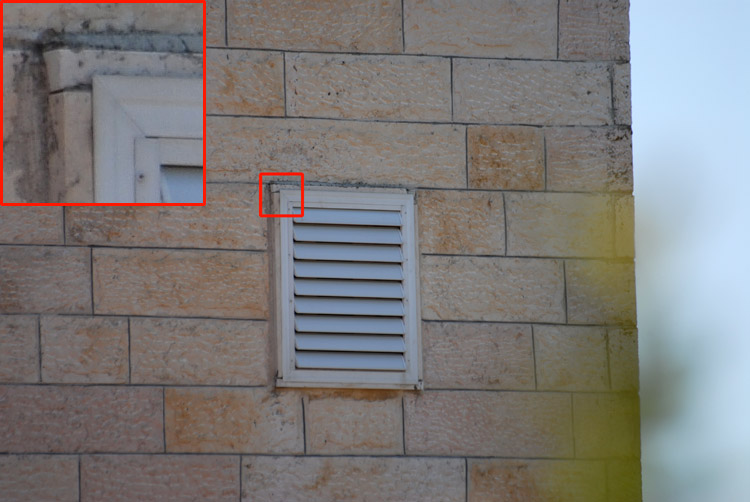 | | Model: NIKON D200 Exposure Time: 1/500sec F Number: 5.6 Max Aperture Value: 5 Focal Length: 300mm Exposure Program: Aperture priority Exposure Bias Value: 0 ISO Speed Ratings: 125 Metering Mode: Center Weighted Average White Balance: Auto white balance Flash: Flash did not fire Focal Length In 35mm Film: 450 Date Taken: 2006:04:14 10:56:10 Color Space: 65535 |
There is no doubt that the Nikon lens has more contrast and that is why the results appear sharper. Now to the question of teleconverters. I’ve tested it with three teleconverters – and it performed well with all three. In line with Nikon’s curious ways, the lens does not report to the EXIF the real focal length and the effective aperture with the teleconverter. Metering is correct and the VR mechanism works well.
With the Kenko Pro 300 x1.4 teleconverter, the focal length obtained is 420mm with a maximal effective aperture of 8.
The sharpness with a wide-open aperture is good, as we will see shortly. Surprisingly, this lens also works with Nikon’s original TC-XXEII teleconverters after a certain tab is removed (leaving them with no warranty!) the results with the 1.4 teleconverter are good, the autofocus system works well, almost without hunting, and in order to achieve maximum quality it is advised to close the aperture by at least one third stop.
The following are the results with a wide-open aperture: 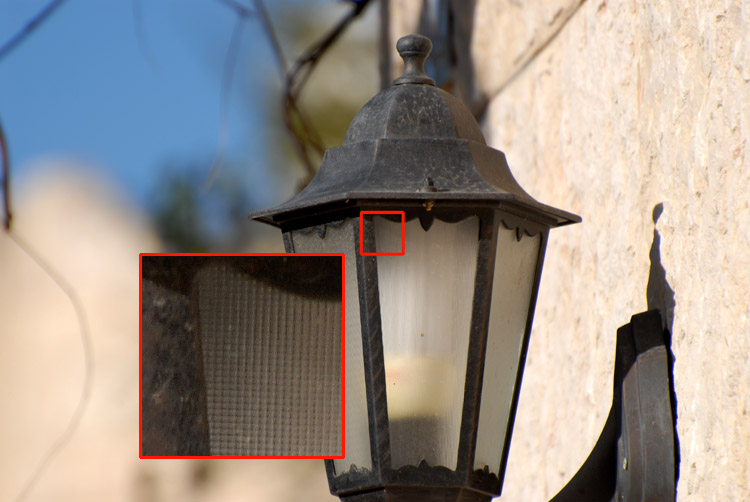 | | Model: NIKON D200 Exposure Time: 1/320sec F Number: 5.6 Max Aperture Value: 5 Focal Length: 300mm Exposure Program: Aperture priority Exposure Bias Value: 0 ISO Speed Ratings: 125 Metering Mode: Center Weighted Average White Balance: Manual white balance Flash: Flash did not fire Focal Length In 35mm Film: 450 Date Taken: 2006:12:15 10:04:07 Color Space: 65535 |
This is certainly a satisfactory option for shooting in good lighting conditions. I connected the Nikon TC-17EII teleconverter (after modification) and here the auto focus system starts to slip.
If there are elements with contrast in the frame – the AF locks, if not – the lens hunts for a while. In this case you can manually help the lens to find focus.
Optically, the results are good, as we will see immediately. The effective focal length is 510mm and the aperture obtained is 9.5. Here too, closing the aperture by one-third stop, upgrades the results.
The following are two examples taken at a wide-open aperture: 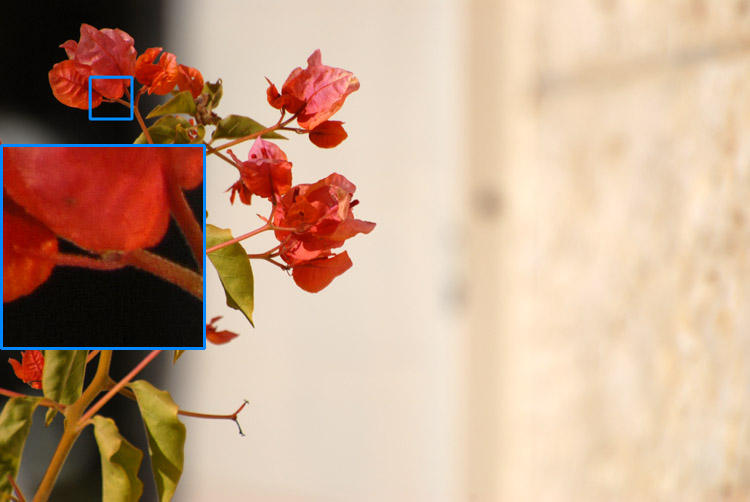 | | Model: NIKON D200 Exposure Time: 1/640sec F Number: 5.6 Max Aperture Value: 5 Focal Length: 300mm Exposure Program: Aperture priority Exposure Bias Value: 0 ISO Speed Ratings: 125 Metering Mode: Center Weighted Average White Balance: Manual white balance Flash: Flash did not fire Focal Length In 35mm Film: 450 Date Taken: 2006:12:15 10:11:28 Color Space: 65535 |
The second example: 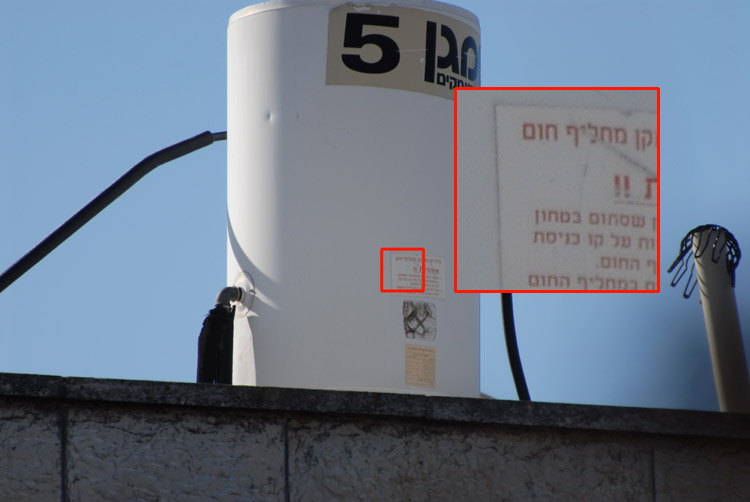 | | Model: NIKON D200 Exposure Time: 1/320sec F Number: 5.6 Max Aperture Value: 5 Focal Length: 300mm Exposure Program: Aperture priority Exposure Bias Value: 0 ISO Speed Ratings: 125 Metering Mode: Center Weighted Average White Balance: Manual white balance Flash: Flash did not fire Focal Length In 35mm Film: 450 Date Taken: 2006:12:15 10:12:01 Color Space: 65535 |
Next, I connected the TC-20EII teleconverter (after modification). The VR system works well and metering is correct (although, as mentioned before, there is not a correct report to the EXIF).
The autofocus system cannot focus and manual assistance is required. The result is reasonable, not more. If I would have used a tripod and closed the aperture by one stop, the results would be much better.
With the x2 teleconverter, the effective focal length is 600mm and the effective aperture is 11.
Closing an additional stop will result with an aperture of 16, which is not practical for use at all.
The following is the result with the TC-20EII teleconverter at a wide-open aperture: 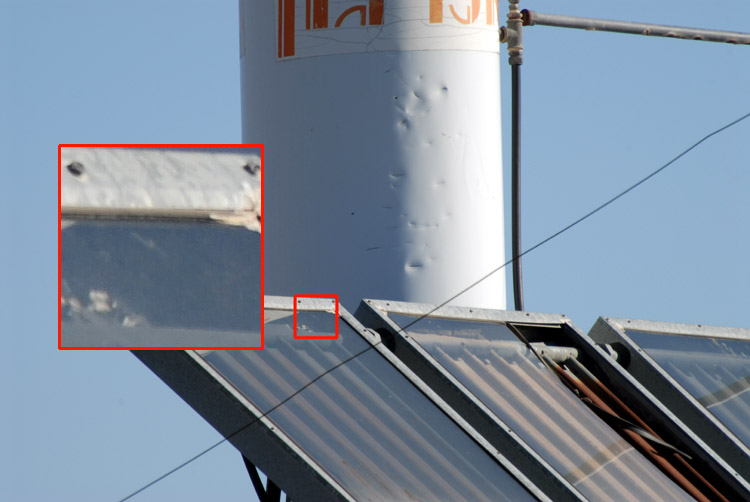 | | Model: NIKON D200 Exposure Time: 1/160sec F Number: 5.6 Max Aperture Value: 5 Focal Length: 300mm Exposure Program: Aperture priority Exposure Bias Value: 0 ISO Speed Ratings: 125 Metering Mode: Center Weighted Average White Balance: Manual white balance Flash: Flash did not fire Focal Length In 35mm Film: 450 Date Taken: 2006:12:15 10:07:07 Color Space: 65535 |
The VR mechanism is supposed to perform well up to about 1/30 of a second (the effective focal length is 450mm – the “safe” manual exposure – 1/450 of a second, four shutter stops below – about 1/30 of a second).
I tried something wild at home – I shot at the 300mm stage with room lighting at a speed of ¼ of a second. One out of the four pictures I took came out reasonable: 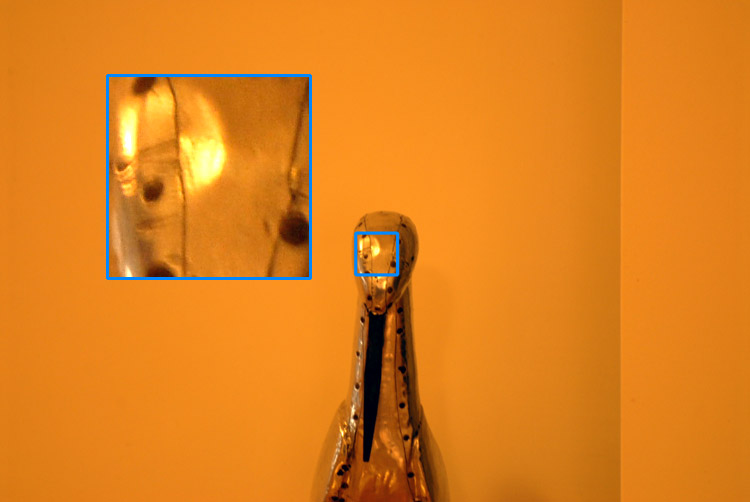 | | Model: NIKON D200 Exposure Time: 1/4sec F Number: 5.6 Max Aperture Value: 5 Focal Length: 300mm Exposure Program: Aperture priority Exposure Bias Value: 0 ISO Speed Ratings: 200 Metering Mode: Center Weighted Average White Balance: Auto white balance Flash: Flash did not fire Focal Length In 35mm Film: 450 Date Taken: 2006:12:15 12:53:04 Color Space: 65535 |
Of course this is not practical at all – but having a success rate of 25% (with three more stops of stability) is not bad at all. During this wild experiment the lens enabled a total of seven stops below the recommended speed; just an interesting anecdote. The following are three pictures taken during the field test in the zoo.
The aperture was closed by one-third stop of the maximum – to f:6.3: 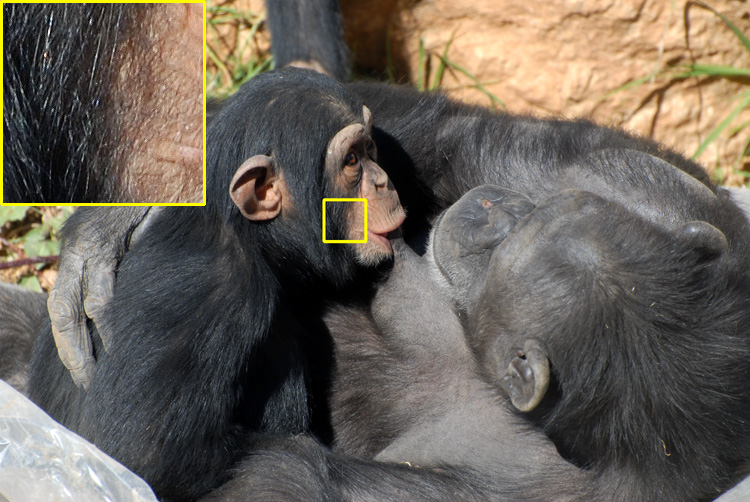 | | Model: NIKON D200 Exposure Time: 1/200sec F Number: 6.3 Max Aperture Value: 5 Focal Length: 300mm Exposure Program: Aperture priority Exposure Bias Value: 0 ISO Speed Ratings: 125 Metering Mode: Center Weighted Average White Balance: Auto white balance Flash: Flash did not fire Focal Length In 35mm Film: 450 Date Taken: 2006:12:16 11:41:56 Color Space: 65535 |
The next picture was taken hand held (!) at 1/10th of a second: 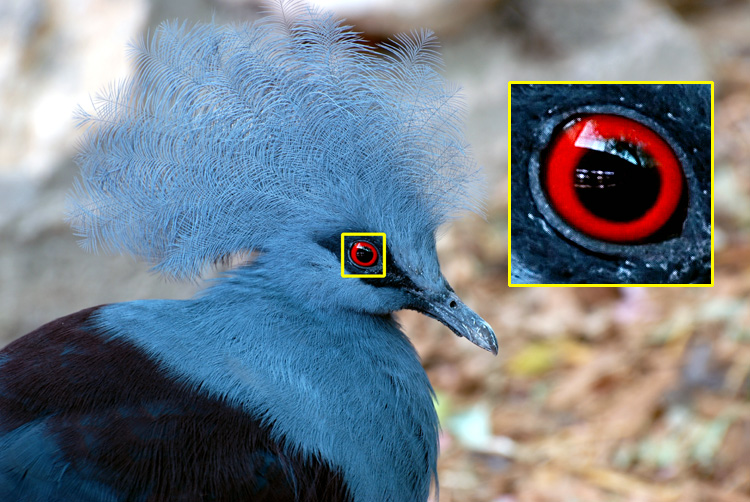 | | Model: NIKON D200 Exposure Time: 1/10sec F Number: 6.3 Max Aperture Value: 4.8 Focal Length: 195mm Exposure Program: Aperture priority Exposure Bias Value: 0 ISO Speed Ratings: 125 Metering Mode: Center Weighted Average White Balance: Auto white balance Flash: Flash did not fire Focal Length In 35mm Film: 292 Date Taken: 2006:12:16 11:15:01 Color Space: 65535 |
And the third: 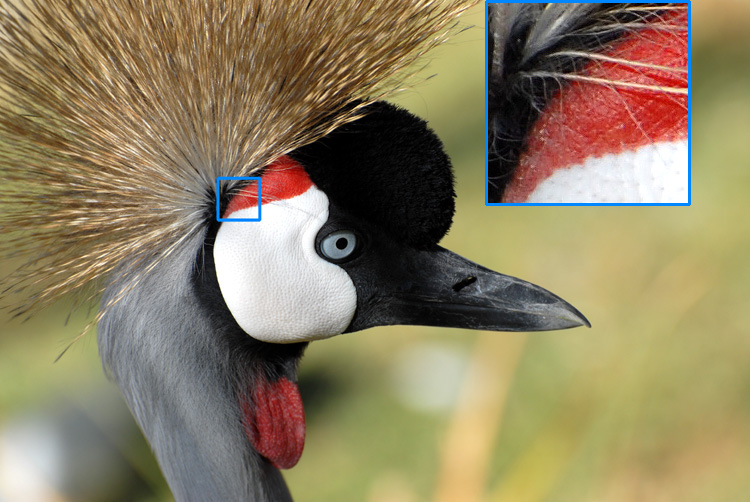 | | Model: NIKON D200 Exposure Time: 1/500sec F Number: 6.3 Max Aperture Value: 4.8 Focal Length: 210mm Exposure Program: Aperture priority Exposure Bias Value: 0 ISO Speed Ratings: 125 Metering Mode: Center Weighted Average White Balance: Auto white balance Flash: Flash did not fire Focal Length In 35mm Film: 315 Date Taken: 2006:12:16 10:55:20 Color Space: 65535 |
The field test was highly successful! In conclusion, here are two examples of the Nikon 70-300 ED lens I had, showing its excellent colors: 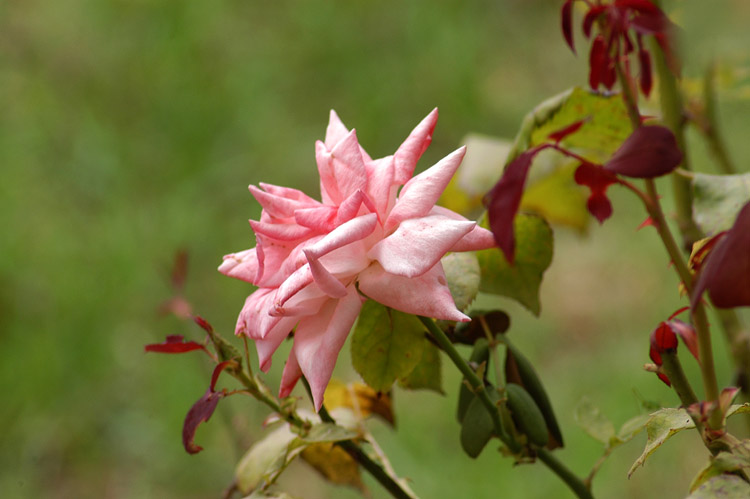 | | Model: NIKON D100 Exposure Time: 1/90sec F Number: 8 Max Aperture Value: 5 Focal Length: 300mm Exposure Program: Aperture priority Exposure Bias Value: 0.3333333 Metering Mode: Pattern White Balance: Auto white balance Flash: Flash did not fire Focal Length In 35mm Film: 450 Date Taken: 2002:09:06 10:41:16 Color Space: 65535 |
And its sharpness with aperture closed to 9: 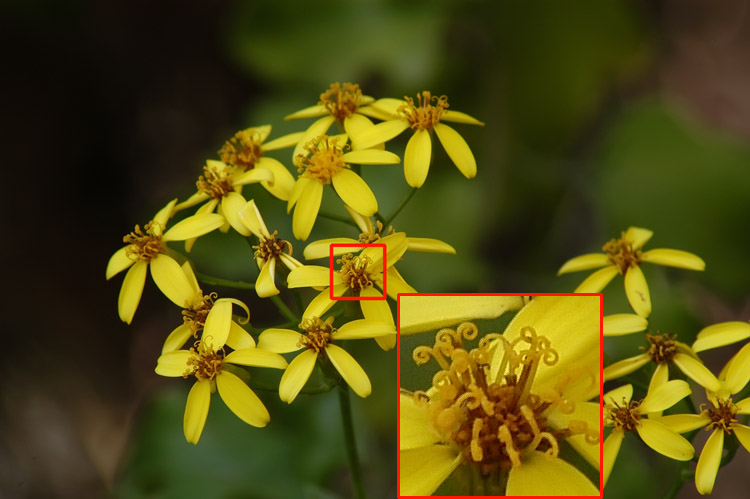 | | Model: NIKON D100 Exposure Time: 1/200sec F Number: 9 Max Aperture Value: 5 Focal Length: 300mm Exposure Program: Aperture priority Exposure Bias Value: 0.3333333 Metering Mode: Spot White Balance: Auto white balance Flash: Flash did not fire Focal Length In 35mm Film: 450 Date Taken: 2002:12:06 14:28:43 Color Space: 65535 |
The following is a table summarizing the tests taken: The bottom line is: this is a very high-quality lens, with a range useful for nature photography. In my opinion, it “crowds” the place of the 80-400 regarding its price and weight. Is it optically better than the 70-200? No. The 70-200 has a sharpness that can’t be reached. Is it better than the 80-400? Here too, with some hesitation I must say no, but it is very close, at least up to 300mm. Can one get rid of the 80-400 if it has the teleconverter attached? Not at all. This is a very good lens, which will find a great place in the bag for trips where weight is critical. Between this lens and the 17-55mm no other lens is needed. And what about the 18-200mm – has its era come to an end? For this too the answer is no. If we could take only one lens with us, there is none better than the 18-200mm. There are cases when the 200 is a bit too short, and a teleconverter can be added – but the results will not compare to the 70-300 lens. So the 70-300 takes a place in-between the three lenses I mentioned here. When going on a trip for a serious shooting series, if the weight is not critical – the 70-200 and a set of teleconverters will do a perfect job. So this is how things look: A single lens: the 18-200mm. Two lenses: the 17-55mm, thanks to its f:2.8 aperture, focusing speed and the wide angle, together with the new 70-300. Three lenses: the 17-55mm, the 70-200mm, teleconverters and a wide lens such as the 12-24mm or a long one (which costs a fortune) – the 200-400VR, depending on the destination. In addition, it is always worthwhile having a fast lens in ones bag (with a wide aperture) such as the 50/1.8, the 50/1.4, or the 35/2 for very bad lighting conditions. To sum up – this lens continues Nikon’s latest tradition of high-quality lenses with a stabilizer and speedy focusing and will make some people reach a fast decision regarding their long lens and to others a headache and confusion – what should we buy now…? One thing is sure – it is certainly worth the price Nikon asks for it! |





